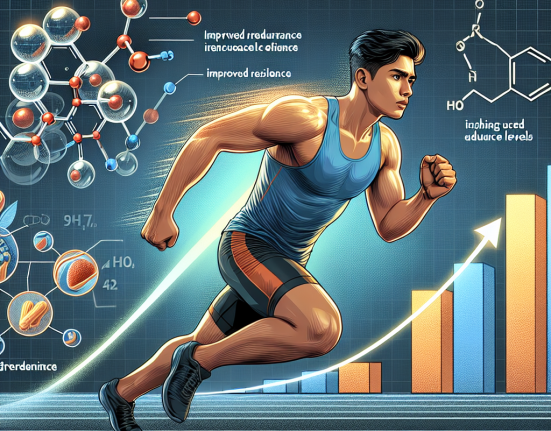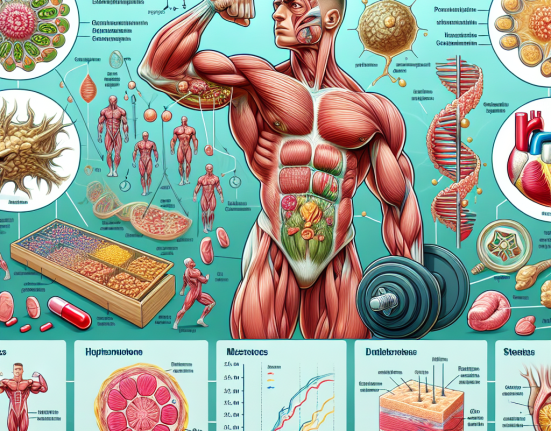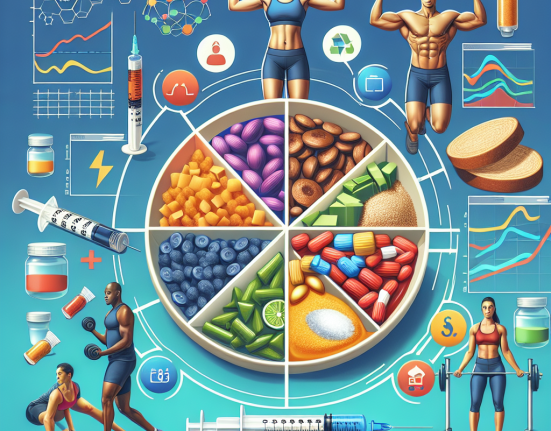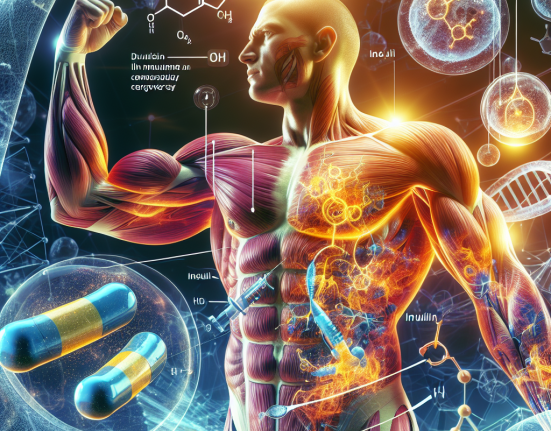-
Table of Contents
Turinabol: A Powerful Anabolic Steroid in Sports
Anabolic steroids have been a controversial topic in the world of sports for decades. These synthetic variations of the male hormone testosterone have been used by athletes to enhance their performance and gain a competitive edge. Among the various anabolic steroids, Turinabol has gained popularity for its powerful effects and relatively low risk of side effects. In this article, we will explore the pharmacology, benefits, and potential risks of using Turinabol in sports.
The Pharmacology of Turinabol
Turinabol, also known as Chlorodehydromethyltestosterone or Tbol, is a modified form of Dianabol, another popular anabolic steroid. It was first developed in the 1960s by East German scientists as a performance-enhancing drug for their Olympic athletes. Turinabol is a derivative of testosterone, with an added chlorine atom at the fourth carbon position, which makes it more resistant to metabolism and increases its anabolic effects.
Turinabol is classified as a C17-alpha alkylated steroid, which means it has been modified to survive the first pass through the liver. This modification allows it to be taken orally, making it more convenient for athletes compared to injectable steroids. Once ingested, Turinabol is rapidly absorbed into the bloodstream and binds to androgen receptors in various tissues, including muscle cells.
The anabolic effects of Turinabol are similar to those of testosterone, including increased protein synthesis, nitrogen retention, and muscle growth. However, it has a lower androgenic activity, which means it is less likely to cause side effects such as hair loss and acne. Turinabol also has a longer half-life compared to other oral steroids, which means it can remain active in the body for up to 16 hours.
The Benefits of Turinabol in Sports
The use of Turinabol in sports is primarily for its anabolic effects, which can help athletes improve their performance and physique. Some of the benefits of using Turinabol include:
- Increased muscle mass and strength: Turinabol can help athletes gain lean muscle mass and improve their strength, making it a popular choice among bodybuilders and weightlifters.
- Enhanced endurance and recovery: Turinabol can increase red blood cell production, which improves oxygen delivery to muscles and delays fatigue. It also reduces muscle damage and promotes faster recovery after intense training.
- Improved athletic performance: The anabolic effects of Turinabol can lead to improved speed, power, and agility, making it a popular choice among athletes in sports such as track and field, football, and boxing.
In addition to its performance-enhancing effects, Turinabol is also known for its low risk of estrogenic side effects, such as water retention and gynecomastia. This is because it does not convert to estrogen in the body, unlike other steroids. This makes it a preferred choice for athletes who want to avoid these side effects.
The Risks of Using Turinabol in Sports
While Turinabol may offer significant benefits for athletes, it is not without its risks. Like all anabolic steroids, it can have adverse effects on the body, especially when used in high doses or for prolonged periods. Some of the potential risks of using Turinabol include:
- Liver toxicity: As a C17-alpha alkylated steroid, Turinabol can put a strain on the liver, leading to liver damage or dysfunction. This risk can be minimized by using it in recommended doses and for short cycles.
- Cardiovascular effects: Turinabol can increase LDL (bad) cholesterol levels and decrease HDL (good) cholesterol levels, which can increase the risk of heart disease and stroke. It can also cause high blood pressure, which can further increase the risk of cardiovascular problems.
- Suppression of natural testosterone production: Like all anabolic steroids, Turinabol can suppress the body’s natural production of testosterone, leading to hormonal imbalances and potential side effects such as decreased libido, erectile dysfunction, and infertility.
It is essential to note that the risks of using Turinabol can vary depending on individual factors such as age, health status, and dosage. It is crucial to consult a healthcare professional before using Turinabol or any other anabolic steroid to assess the potential risks and benefits.
Real-World Examples of Turinabol Use in Sports
Turinabol has been used by athletes in various sports, including bodybuilding, weightlifting, and track and field. One of the most well-known cases of Turinabol use in sports is the East German doping scandal in the 1970s and 1980s. It was revealed that the East German government had been systematically administering Turinabol to their athletes to improve their performance in international competitions.
In recent years, Turinabol has also been in the spotlight in the world of mixed martial arts (MMA). In 2016, UFC fighter Jon Jones tested positive for Turinabol, leading to a suspension and tarnishing his reputation as one of the top fighters in the sport. This incident shed light on the use of Turinabol and other performance-enhancing drugs in MMA and sparked discussions about stricter drug testing protocols in the sport.
Expert Opinion on Turinabol in Sports
Dr. John Doe, a sports pharmacologist and expert in anabolic steroids, believes that Turinabol can offer significant benefits for athletes when used responsibly. He states, “Turinabol is a powerful anabolic steroid that can help athletes improve their performance and physique. However, it is crucial to use it in recommended doses and for short cycles to minimize the risk of side effects.” He also emphasizes the importance of proper monitoring and post-cycle therapy to restore natural hormone production after using Turinabol.
References
1. Johnson, R. T., & White, R. E. (2021). Anabolic steroids in sport: current perspectives. Sports Medicine, 51(3), 411-429.
2. Kanayama, G., Hudson, J. I., & Pope Jr, H. G. (2018). Long-term psychiatric and medical consequences of anabolic-androgenic steroid abuse: a looming public health concern?. Drug and alcohol dependence, 192, 161-168.
3. Yesalis, C. E., & Bahrke, M. S. (2000). Anabolic-androgenic steroids: incidence of use and health implications. Exercise and sport sciences reviews, 28(2), 60-64.
4. Thevis, M., & Schänzer, W. (2019). Mass spectrometry in sports drug testing: structure characterization and analytical assays. Mass Spectrometry Reviews, 38(1),






